Tales of Graces f Review
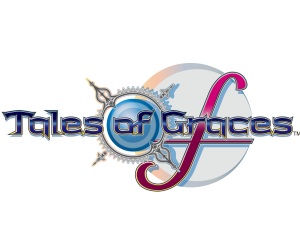 Game: Tales of Graces f
Game: Tales of Graces f
Developer: Namco Tales Studio
Publisher: Namco Bandai Games
Available on: PlayStation 3 only
With a cover that looks like every single middle-of-the-road JRPG released this decade and a title that looks like a typo, Tales of Graces f threatens to pass unnoticed beneath the radar of all but long-term fans of the Tales series. Indeed, at first glance there’s really nothing that sets this brightly-coloured story of big-eyed moppets apart from any other: a group of kids (some more spiky-haired than others) set off on a quest to solve an ancient mystery and restore peace to their warring homeland. Along the way they learn the value of friendship and kill monsters. Lots and lots of monsters.
It would be a shame, however, if Tales of Graces f were to be missed by its target audience, because a few hours of dedicated gameplay uncovers a beautifully constructed battle system that’s a complete joy to learn and master. To find out whether its delicate blend of timing, strategy and earnest teenagers is for you, read on.
STORY: Tales of Graces f’s plot is an intricate affair that touches upon war, politics and supernatural phenomena beyond human comprehension. But at its heart it is a story about friendship. This is something it has in common with almost every JRPG ever made, but Tales of Graces f’s twist, if you can call it that, is a lengthy prologue sequence that introduces almost all of the main characters as children. This doesn’t just add context for the story to come, but it gives us a unique perspective on the characters as adults.
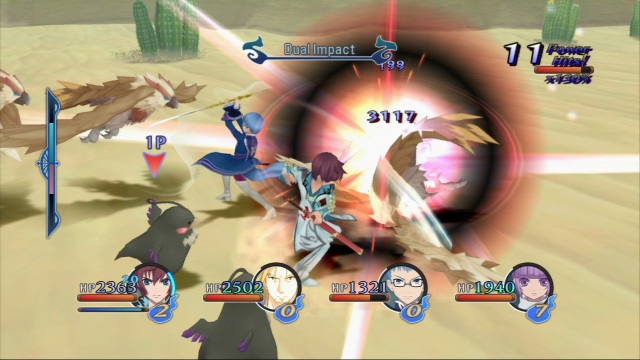
Were the cold, disciplined Hubert (for example) introduced to us as an adult, it would be hard to sympathise with him. It’s just as well that when we meet him he’s the uncertain, put-upon younger brother of the breezy and sometimes thoughtless Asbel. Likewise, Richard makes a lot more sense when we consider the loneliness of his royal childhood, and Cheria’s sad-eyed practicality is a direct result of early years blighted by illness.
Though the prologue itself is by far the weakest part of the narrative (think “Muppet Babies” but with more subterfuge), it gives the older versions of the characters more depth and context. There’s Asbel, the cocky protagonist, Hubert, his introspective younger brother, Cheria, his childhood friend-come-love-interest, young prince Richard, mysterious Sophie, token beard-wearer Malik and the infuriating Pascal, who re-inforces all the worst stereotypes that have ever existed about squeaky JRPG sidekicks.
When we meet the childhood friends, it’s against a backdrop of adult concerns, be it Asbel and Hubert’s noble father’s lofty ambitions for his sons, Cheria’s grandfather’s fears for her health or the political struggles consuming poor Richard. The four meet an amnesiac, homeless, nameless girl (as you do), Asbel calls her “Sophie” and youthful hi-jinx ensue. They don’t last long before the adult world interferes though, and seven years later the group are scattered across the world. Reunions are uncomfortable, and the story is as much about reaching an emotional equilibrium between the characters as it is about solving the various crises that threaten the world.
It’s a sweet story, but it’s let down by an average script and pedestrian voice acting. The characters are likable but not lovable, and though you’ll care about their fate, they don’t provide a reason to keep playing if the gameplay doesn’t appeal to you.
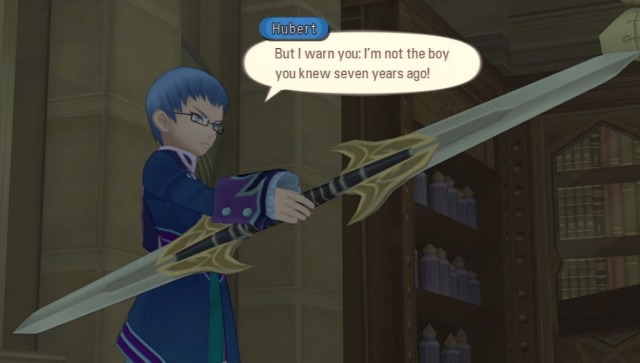
GRAPHICS: Cell-shaded cartoonish graphics are the order of the day here, and they’re perfectly serviceable, nothing more. Costume and environmental design are a familiar pastel-coloured blend of European medieval and modern anime aesthetics that lack both texture and personality; there’s really nothing that sets Tales of Graces f’s visuals apart from those of any other cell-shaded anime-influenced game this generation.
Monster design, so important in a JRPG, suffers from both homogeny and excessive cuteness. Many of the foes you’ll meet look like squeaky bath toys, devoid of the visual clues as to their weaknesses and abilities. This isn’t a tactical drawback (you always have access to an “Enemy Book” that lists enemy characteristics), but it decreases immersion significantly. Great JRPG enemy design uses colour, texture or behaviour to give the player subtle indications of how battles will play out, and Tales of Graces f doesn’t really manage this. Regular baddies aren’t quite memorable enough to carry you from battle to battle without needing to look up their weaknesses in your (admittedly well-written) Enemy Book, and bosses are lacking in presence.
SOUND: Sound in Tales of Graces f is either pleasantly forgettable, like the ambient music or most of the voice-acting, or utterly ghastly, like the J-pop theme song or anything Pascal says at any point ever.
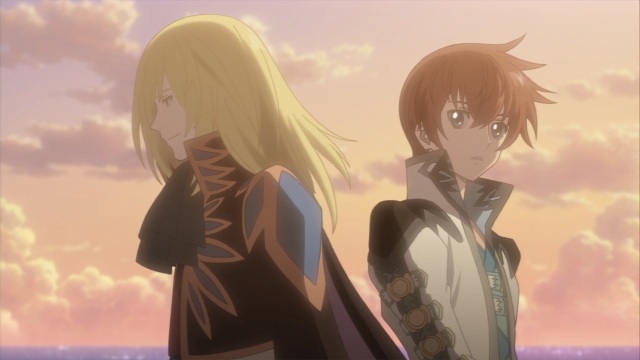
GAMEPLAY: Fortunately, the resolutely average presentation stops mattering so much when you actually start playing the game, because Tales of Graces f has one of the best battle systems in this generation on JRPGs.
Like Final Fantasy XIII and XIII-2, the entire party fights at once, you only control one character and “turns” as we know and love (or loathe) them are gone, replaced instead with a meter that fills over time dictating the number of moves you make. Unlike those divisive games however, you have a huge amount of influence over the party’s overall strategy, and this is what really makes the difference between victory and defeat.
The “strategy” menu doesn’t just let you choose each character’s “role” in battle, but also the kind of “Artes” (moves, basically) they use, how often they attack, how often they heal and what their priority is. For example, you can reduce numbers, target the biggest monsters, do what the leader does, attack casters or protect allies. You’ll be tweaking strategies all the time depending on your party formation, the skills your characters learn and whether you’re battling bosses or simply grinding, and it’s very rewarding to see the effects of subtle changes.
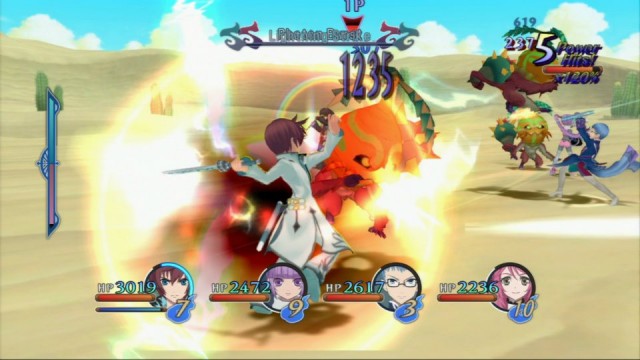
Fighting itself is a good balance of timing and strategy. Presuming you set your lead character to full manual control (though it’s certainly a good test of your strategy to set everyone to automatic and see what happens), you’ll discover a slick, responsive battle system that almost feels like a straightforward fighter, rather than a JRPG, until you get used to it. That’s because rather than selecting Artes from a menu during battle, you map the ones you want to certain key commands beforehand and then use them automatically.
The fact that you block by holding a button and dodge by moving and blocking at the same time means that it can feel at times like a hybrid between fighter and JRPG, but don’t be fooled: this is a JRPG that not only makes ingenious use of space, but also streamlines its controls to minimise the disconnect between your commands and the action on screen. If you enjoyed Eternal Sonata’s use of spatial strategy in battles, Tales of Graces f comes highly recommended. It’s also worth noting that by allowing you to set up so much of your strategy before you actually go into battle, the battle interface is kept extremely clear and free of clutter, a good thing when the average battle might have nine different combatants, half of whom are casting spells.
Each character has a set of “A” and “B” artes, and can switch between modes at will during battle. For example, all-rounder Asbel pulls off quick-fire A-Artes with his sword sheathed, but has to draw his blade to execute the more powerful B-Artes. All the lead characters handle very differently on the battlefield, so you’ll want to dedicate some serious time to all of them. Sophie’s a resilient close-range fist-fighter, Richard can conjure vast magical jaws that crash down on multiple enemies, and Pascal repays careful timing with powerful attacks that make good use of the whole battlefield. Getting to know each character by taking control of them for a few hours will of course help you improve your strategy when you eventually relegate them to supporting fighter.
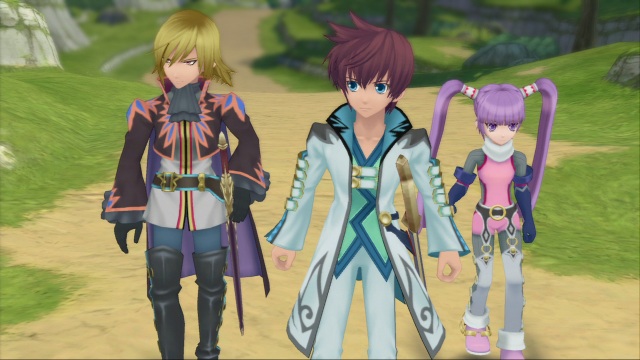
Tales of Graces f’s skill trees come in the form of “Titles”, learnable collections of stats and skills that you apply to your character as they fight. New titles are unlocked by completing portions of the story and by accomplishing certain feats, and because you’ll unlock more than you’re ever likely grind to full power, choosing which Titles to master and which to apply to which character for key battles adds another layer of depth to the strategy.
Brilliantly, Tales of Graces f features couch co-op, meaning a friend can join you in the chaos of battle. This isn’t a feature that the JRPG market has exactly been crying out for, but it’s welcome here, partly because the battle system is so great you’ll want to share it with someone, and partly because it’s a great way to introduce younger players to the wonderful world of JRPGs.
LONGEVITY: The “f” in Tales of Graces f stands for “future”, since the PlayStation 3 version of the game contains an extra chapter, “Lineage and Legacies”, not present on the original Wii release of the game (only available in Japan). This not only gives the story closure, but also provides extra longevity and value to what is already, you know, a JRPG.
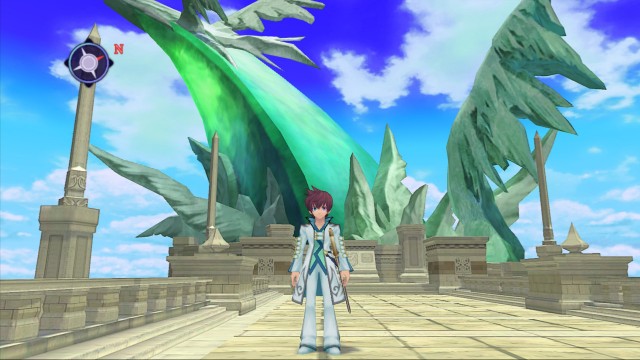
VERDICT: Tales of Graces f is great, but it isn’t truly special. Its design suffers from a lack of flair that may well see it overlooked in favour of more eye-catching titles, and its characters never deviate from type. Anyone looking for a profoundly moving story that will transport them utterly to another world will be disappointed.
But JRPG fans looking to get their teeth into a deep battle system will find much to enjoy here, as gameplay yields rich rewards. Instantly customisable difficulty and AI settings mean you can continually adjust the challenge as you improve, and the complex yet extremely clear “strategy” settings give more tactically-minded players the chance to programme their party so that each battle plays out like a well-oiled machine.
It’s also worth pointing out that this is a great game for younger players, or even an adventure for parents and children to play together. The story, while it’s never going to give the good people at Pixar any sleepless nights, is both coherent (not always a given with a JRPG) and heartfelt, and the mechanics are perfectly set up to allow those new to the genre to find their feet.
If you’re looking for a deep, strategic battle system or an accessible introduction to a genre that can sometimes seem impenetrable, Tales of Graces f is a solid choice.





